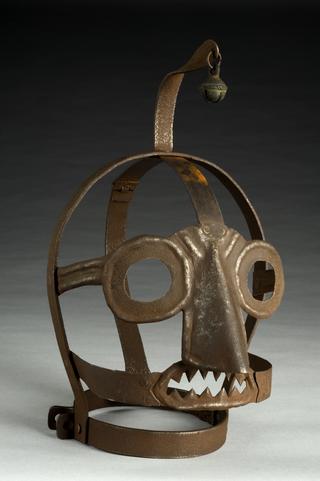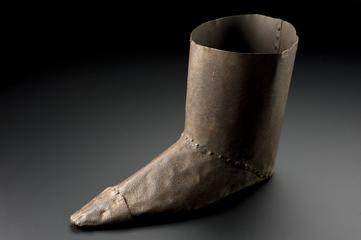








Gold memento mori ring, with oval setting which shows a flower and an inscription painted on a white background, beneath glass, possibly, glass, possibly 18th century
Who was Augusta Bruce? She is forgotten now, but when she died more than two centuries ago this now slightly battered gold ring was made to remember her by. It is known as a mourning ring. Just one manifestation of a wide range of items called ‘memento mori’ – a Latin phrase that essentially means ‘remember you will die”. As well as commemorating the passing of a loved one, they also reminded the wearer of their own mortality.
Often bequeathed in wills, or handed out at funerals such rings became particularly popular from the mid 1600s, remaining so until the very early 1900s. They were part of an outward expression of personal grief. A grief that could also be made public in a number of other ways – most notably by the wearing of dark clothing.
Could the ring offer up clues about Augusta’s life? And who might have worn such a ring? The flowers and the inscription that reads “Nipt in the bud” suggest sadly that her life was a short one. The white background – a sign of purity – also leads to the conclusion that Augusta was either a child, or possibly a young, unmarried woman when she died. The use of gold would indicate that she was from a wealthy family. Perhaps it was her grieving mother who once wore this very ring as a reminder of a beloved daughter.
Details
- Category:
- Wellcome (general)
- Collection:
- Sir Henry Wellcome's Museum Collection
- Object Number:
- A641560
- Materials:
- gold, ? material and ivory, ? material
- Measurements:
-
overall: 20 mm 19 mm,
- type:
- memento mori




